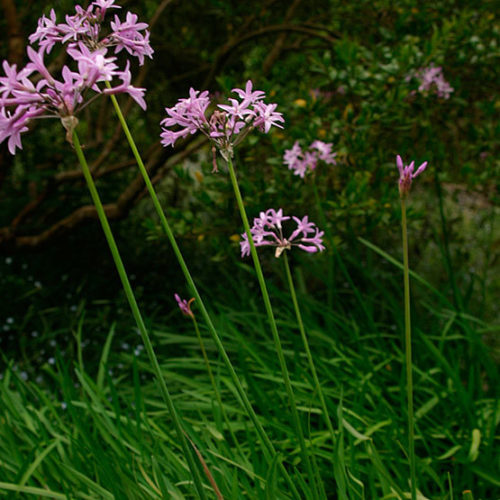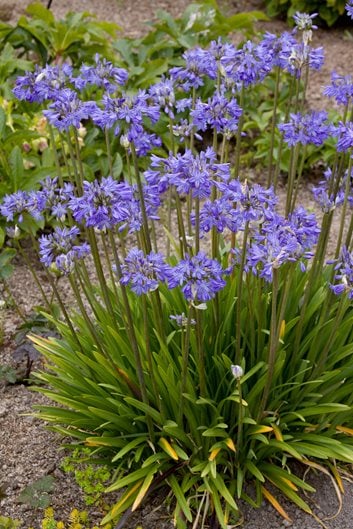Grasping the Art of Agapanthus Treatment: Necessary Actions for Healthy And Balanced Development and Dynamic Blooms
In the realm of gardening, the farming of agapanthus stands as a satisfying venture for those who seek to support these stylish flowering plants. From choosing the ideal selection to grasping pruning techniques, the journey in the direction of cultivating prospering agapanthus plants is diverse and holds the essential to opening the complete potential of these agricultural treasures.

Picking the Right Agapanthus Selection

When picking the ideal Agapanthus variety for your yard, think about factors such as environment suitability, blossom color, and growth habit. Furthermore, consider the environment in your area to guarantee the Agapanthus variety you select can prosper in your specific problems. Recognizing the growth routine of various Agapanthus ranges is crucial for proper placement within your garden.
Ideal Growing Conditions
Taking into consideration the optimum ecological needs is vital for effective Agapanthus growing. Agapanthus plants are delicate to cool temperatures and ought to be safeguarded from frost throughout wintertime months.
To ensure healthy and balanced development and vibrant flowers, plant Agapanthus bulbs at a depth of about 2-4 inches and room them 8-12 inches apart. Mulching around the base of the plants helps maintain moisture and suppresses weed development.
Watering and Fertilizing Tips
Keeping correct dampness degrees and giving essential nutrients are crucial elements in the care program for Agapanthus plants. It is critical to strike an equilibrium when it comes to sprinkling Agapanthus. These plants like continually damp dirt but are susceptible to root rot if overwatered. Throughout the growing period, water deeply when a week, making sure the soil is well-draining to stop waterlogging. In hotter environments or throughout periods of dry spell, even more frequent watering might be required to keep the dirt evenly wet. Nevertheless, reduce watering in the winter to stop waterlogged conditions.
Feeding Agapanthus is essential for advertising healthy and balanced development and prolific flowers. Apply a balanced plant food, such as a 10-10-10 formula, in the very early spring as brand-new growth arises. Repeat this application every 6-8 weeks throughout the growing period. Stay clear see here now of excessive fertilizing, as it can cause lush foliage at the expenditure of blooms. Constantly follow the manufacturer's instructions for appropriate dilution and application techniques. By adhering to these watering and fertilizing ideas, you can ensure your Agapanthus plants prosper and produce vibrant, durable flowers.
Pruning Techniques for Agapanthus
Pruning Agapanthus plants at the proper times and with correct go now strategies is important for preserving their wellness and promoting optimal growth and flowering. The excellent time to trim Agapanthus remains in late winter months or early spring before new growth emerges. Beginning by removing any dead or yellowing fallen leaves near the base of the plant. Cut them as short as feasible without damaging the emerging shoots.
Deadheading invested blossoms can also redirect the plant's energy right into creating more flowers instead than establishing seeds. If you desire to gather seeds for propagation, leave some blossoms to fully grown and completely dry on the plant.
Remember to use tidy, sharp devices to make specific cuts and minimize the danger of introducing illness. Agapanthus. Regular trimming will certainly assist maintain your Agapanthus looking healthy and balanced and cool while guaranteeing a plentiful display of attractive flowers
Dealing With Common Insects and Diseases
After guaranteeing proper pruning methods for Agapanthus, it is crucial to address typical bugs and diseases that can influence the health and vigor of these plants. One common insect that impacts Agapanthus is the Agapanthus gall midget.
Furthermore, Agapanthus plants can experience from root rot if they are grown in inadequately draining pipes dirt. By being cautious and taking punctual activity against i was reading this diseases and bugs, you can help your Agapanthus plants prosper and generate vibrant blooms. Agapanthus.

Conclusion
In verdict, understanding the art of agapanthus care entails picking the ideal variety, providing excellent growing conditions, proper watering and fertilizing, proper pruning strategies, and attending to common insects and diseases. By complying with these vital steps, you can make sure healthy development and vivid blossoms for your agapanthus plants. Keep in mind to routinely keep track of and maintain your plants to advertise their total well-being and longevity.
To make certain healthy growth and vibrant blooms, plant Agapanthus light bulbs at a depth of regarding 2-4 inches and room them 8-12 inches apart. By complying with these watering and fertilizing pointers, you can ensure your Agapanthus plants prosper and generate dynamic, lasting flowers.
One common insect that influences Agapanthus is the Agapanthus gall midge. In addition, Agapanthus plants can suffer from origin rot if they are grown in inadequately draining pipes soil. By following these necessary steps, you can guarantee healthy development and vibrant flowers for your agapanthus plants.
Comments on “How to Plant and Maintain Agapanthus in Your Garden”